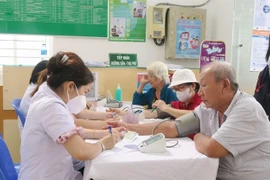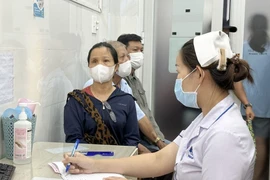Hanoi (VNS/VNA) - The Ministry of Health will focus on developing science, technology, innovation and digital transformation in healthcare this year.
This is stated in the ministry's action plan to implement the Politburo and Government’s resolutions on scientific development, innovation and the national digital transformation, signed into effect by Minister Dao Hong Lan.
Under the plan, the leadership of health agencies must directly take charge of efforts to develop healthcare technology.
The action plan includes seven specific tasks and solutions.
First, it is necessary to enhance awareness, make breakthroughs in innovative thinking and establish strong political determination to create new momentum across society for digital transformation in healthcare.
Units under the ministry have to allocate a suitable proportion of personnel with expertise and experience in science and technology in each stage and implement training programmes for healthcare staff on science, technology, innovation, digital healthcare and basic technology skills for the national digital transformation.
They must also strengthen investment resources and improve infrastructure for science, technology, innovation and digital transformation in healthcare.
The second task is to coordinate with relevant ministries and branches to review and amend regulations to submit to the National Assembly and the Government for approval in order to eliminate all barriers hindering development and increase the institution's competitive advantage.
The ministry will develop a number of research institutes and medical universities, closely combining research, medical applications and training of healthcare workers.
Third, on the basis of revised legal provisions on science, technology and innovation approved by the Government and the National Assembly, the units will increase investment sources and complete infrastructure for digital transformation in healthcare.
Public scientific and technological organisations will be reviewed and restructured, under a plan to restructure public scientific and technological organisations approved by the Prime Minister.
A focus on linking research with training and applications in disease prevention and treatment also needs to be prioritised.
Science and technology programmes at the ministry level must continue to be implemented.
It is necessary to implement key tasks and projects to promote research, development, application and commercialisation of key technologies such as gene, cell, automation and personalised medicine.
Deploying artificial intelligence and other new technology, including big data, Internet of Things, cloud computing, blockchain and 3D printing technology is also crucial to support diagnosis and treatment, disease prevention, administrative reform and medical education.
Fourth, training and making use of a highly skilled workforce to meet the requirements of the digital era in healthcare is needed to build a network of domestic and international experts and scientists in the medical field.
Connecting research institutes, hospitals, medical universities and businesses to enhance the application of research results into practice will also be crucial.
Fifth is to support businesses in developing new digital applications, services and digital infrastructure in the form of public-private partnerships, applying an electronic health book for at least 95% of people and deploying the Digital Transformation Project of Hanoi’s Bach Mai Hospital and Ho Chi Minh City’s Cho Ray Hospital.
Sixth is to build and implement support programmes to promote digital transformation in healthcare enterprises.
Finally, it is essential to enhance international cooperation in scientific research, development and technology transfer, especially in the fields of AI, big data, biotechnology and gene technology./.
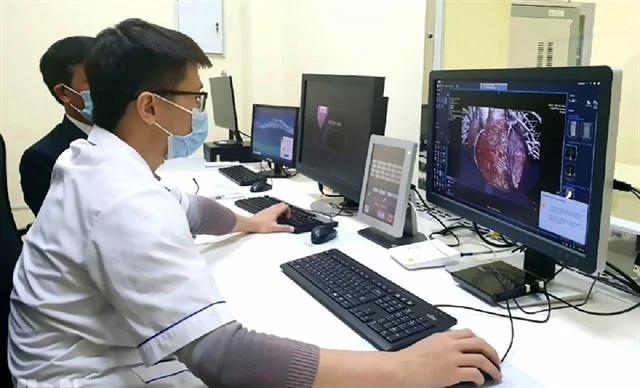
See more
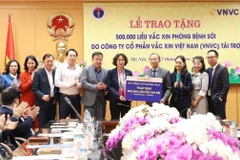
Ministry of Health receives 500,000 doses of measles vaccine
The Ministry of Health (MoH) has received 500,000 doses of measles vaccine presented by the Vietnam Vaccine JSC (VNVC) to support a nationwide immunisation campaign.

PM releases instructions as measles cases increase
Vietnam has recorded nearly 40,000 suspected measles cases and five measles-related deaths since the beginning of this year. The southern region reported the highest number of cases (57%), the central region accounted for 19.2%, the north 15.1%, and the Central Highlands 8.7%.
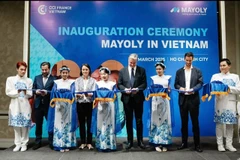
French pharmaceutical group opens representative office in HCM City
This office plays a key role as a strategic liaison point, capable of conducting in-depth market research and developing new key partnerships in the country.
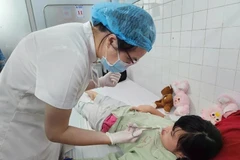
Hundreds of children with birth defects receive free surgeries in Hue
A team of 13 specialists from Germany, Italy, Austria, and Spain is conducting screenings for hundreds of children and performing over 100 surgeries to correct cleft lip, palate, and other congenital facial defects.

Vietnam strengthens cooperation in measles prevention with int'l partners
Vietnam wishes to receive continued international support, particularly in vaccine provision. It is ready to handle potential outbreaks and also plans to roll out further immunisation campaigns.
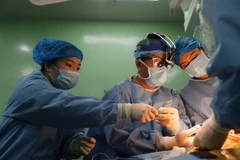
Vietnam sees high demand for organ transplants, but lacks donations
Organ donations from deceased and brain-dead donors remain scarce, while the demand for transplants continues to rise, with the main reason being lack of public awareness and ineffective communication and advocacy efforts.
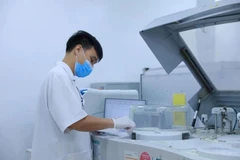
Vietnam - potential market for Korean medical equipment companies
According to Digital Times, with the healthcare market in Vietnam growing at an impressive average rate of 28% annually from 2018 to 2022, and projected to continue expanding at 10% per year until 2027, the country offers enormous potential.
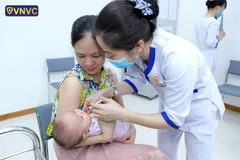
Rota vaccine campaign launched
Titled 'Protect Your Baby from the First Steps', the campaign, jointly launched by UNICEF Vietnam and the Ministry of Health, seeks to enhance public awareness, particularly among parents, of the crucial role of the Rota vaccine in preventing acute diarrhoea caused by the Rotavirus.

City International Hospital officially opens its IVF centre
The centre has integrated a high-success-rate infertility treatment model, investing in state-of-the-art medical technology.

MEDIAIPLUS unveils AI-powered breakthroughs in clinical trials at MWC 2025
MEDIAIPLUS will showcase its innovative platforms MediC and FiCRO at MWC 2025, held from March 3 to 6 at Hall 7, Stand 7F62, Fira Gran Via, in Barcelona, Spain.
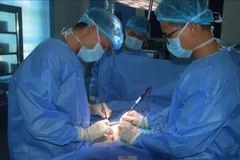
Song Tu Tay island infirmary saves lives of fishermen
Recently, military medical workers of the Song Tu Tay island infirmary have successfully provided first aid and treatment for many fishermen with health problems while fishing in the Truong Sa sea area.

NA Chairman commends Huu Nghi Hospital’s commitment to public health excellence
National Assembly Chairman Tran Thanh Man urged Huu Nghi hospital to upgrade its infrastructure and enhance the professionalism and service spirit of its medical staff.
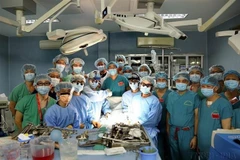
Healthcare sector makes advance in 2024: Minister
In addition to efforts to improve the quality of routine medical services, the year also marked significant milestones with the successful implementation of numerous advanced medical techniques across various specialties, contributing to increasing patient satisfaction, the minister said.
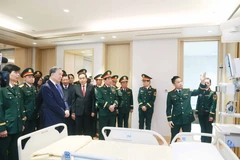
Party chief underscores patient-centred approach on Vietnamese Doctor’s Day
The hospital must successfully fulfil the tasks of admission, emergency care, and treatment, he stressed, calling for close integration of treatment and scientific research, as well as training and scientific research. He advocated for preferential mechanisms and policies to attract medical professionals to engage in scientific research and higher education.

Party leader orders removing bottlenecks for health sector to thrive
He stressed that, in addition to effectively implementing the Party's resolutions on healthcare, it is essential to adopt a new mindset to remove barriers and bottlenecks, enabling the sector to advance in the coming period.

Vietnamese Doctor’s Day marked in Russia
Addressing the event, Ngo Thi Thu Hoai, member of the Standing Board of the Party Committee in Russia, wished health and success to the doctors and medical students in Russia, encouraging them to continue their research and contribute to their homeland’s development.
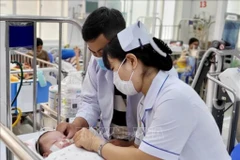
HCM City: nearly 1,500 respiratory arrest cases given first aid via phone
Nearly 1,500 cases of out-of-hospital respiratory arrest in Ho Chi Minh City received first aid via phone over the past year. In addition, the emergency force has gradually offered specialised emergency services, targeting such groups as mentally-ill patients, those with depression and suicidal thoughts, stroke patients, and those with multiple injuries.

HCM City’s smart healthcare system gradually pays off
HCM City's healthcare sector has for years been enhancing technology applications to develop a smart healthcare system, providing increasingly effective and convenient health services to the public. Hospitals in the city have made efforts to replace paper records to electronic ones, ensuring safe storage of patient information that is easily retrievable and shareable among healthcare facilities.
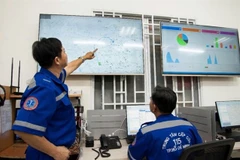
HCM City develops network of emergency medical stations
Ho Chi Minh City is developing an emergency healthcare network that meets Southeast Asian standards, according to its Department of Health.
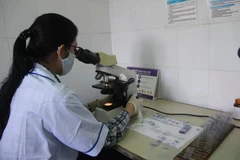
Malaria cases in Vietnam down 20% in 2024
According to Dr. Hoang Dinh Canh, Director of the Central Institute of Malaria, Parasitology, and Entomology, from 2014 to 2024, the number of malaria cases and deaths has gradually declined year on year, with a decrease of 97.76% from 15,752 cases to 353 cases per year.
